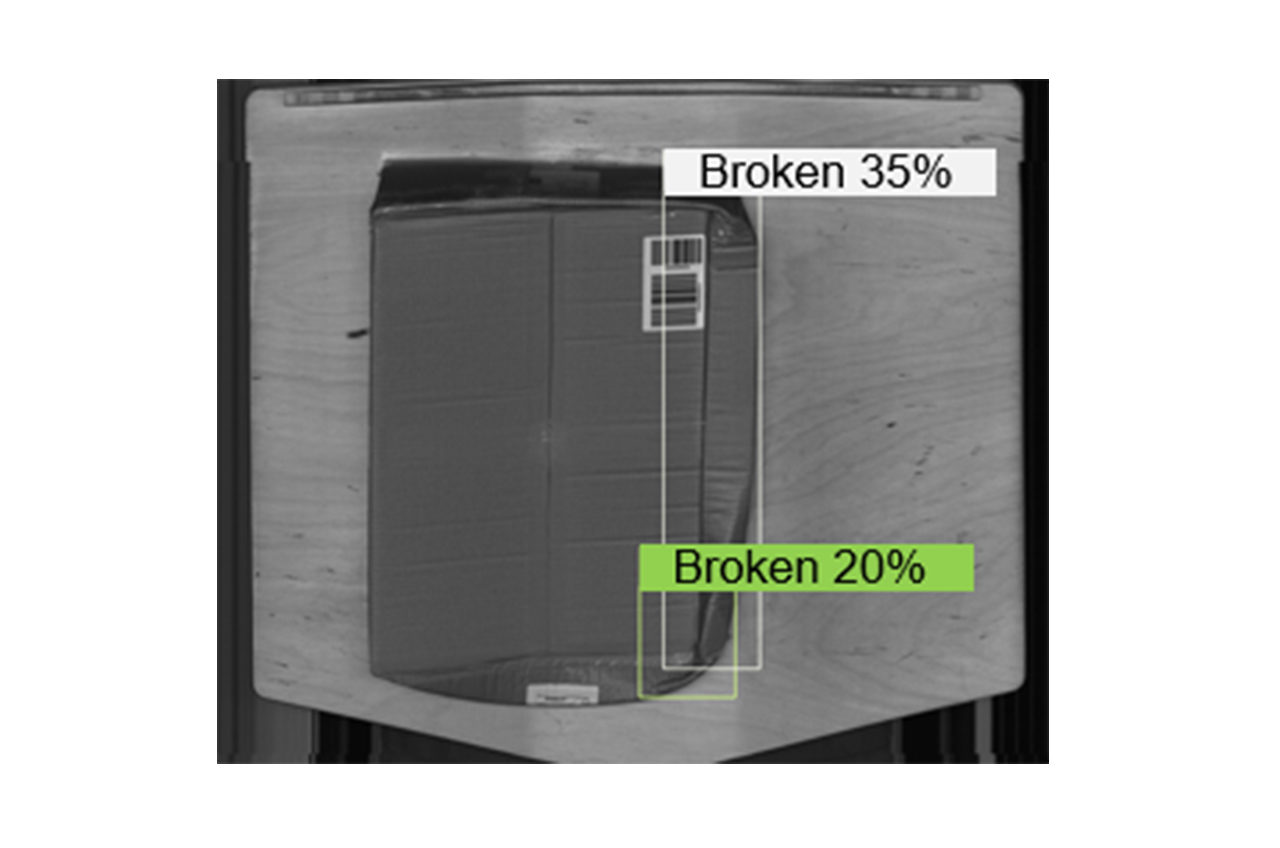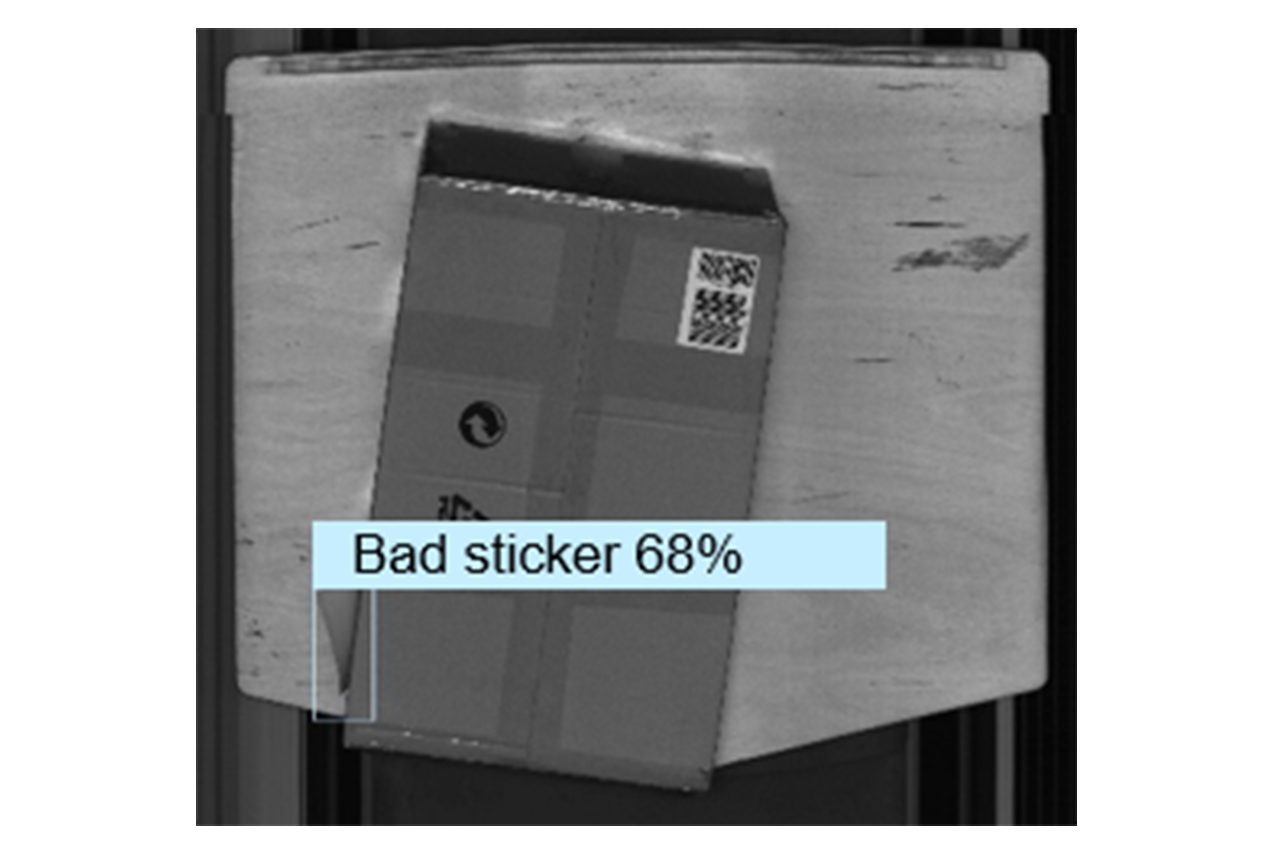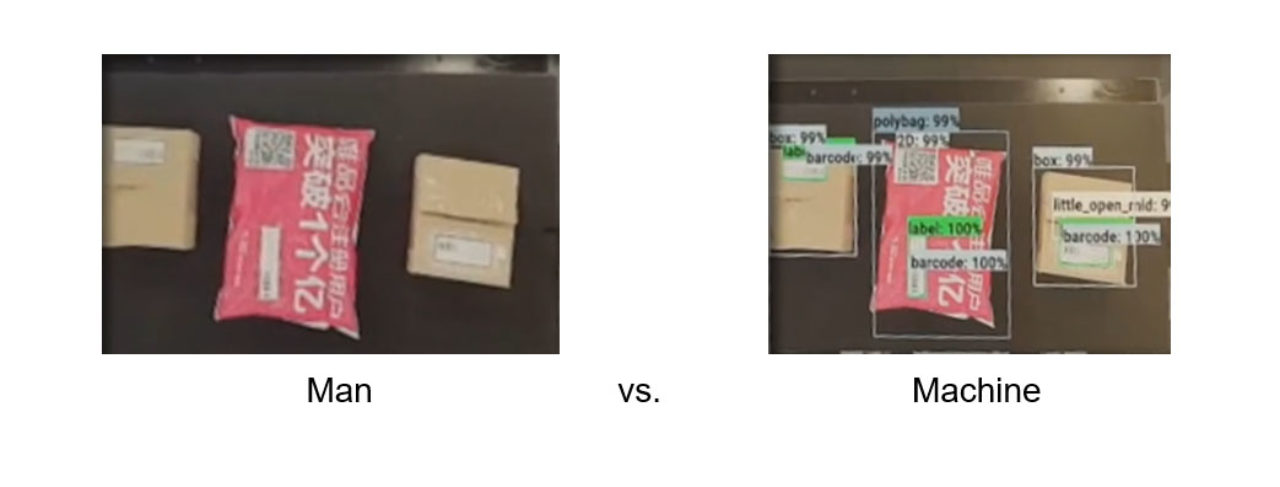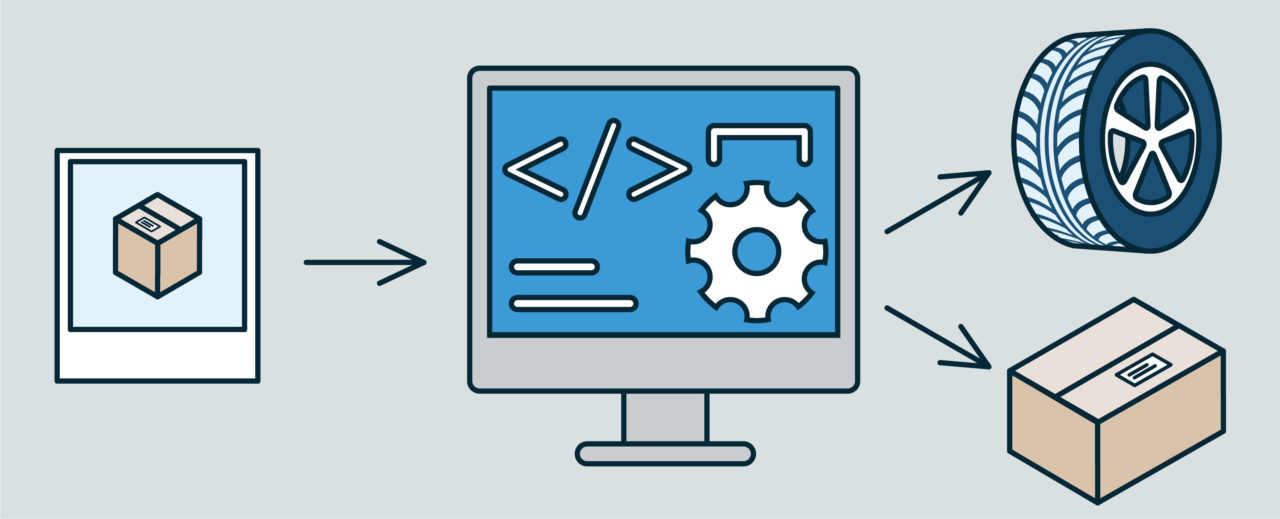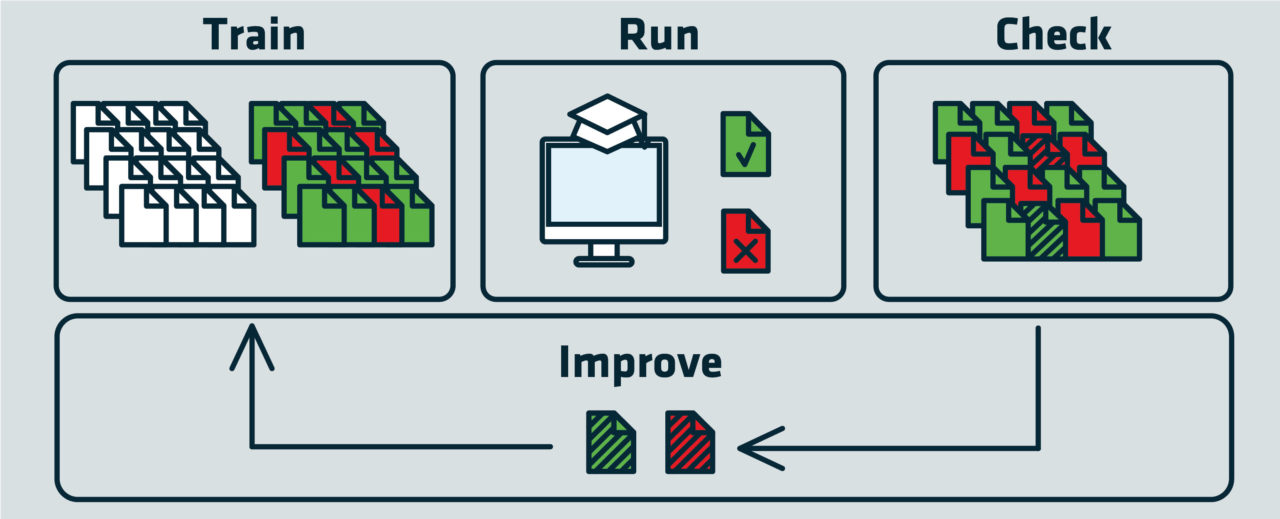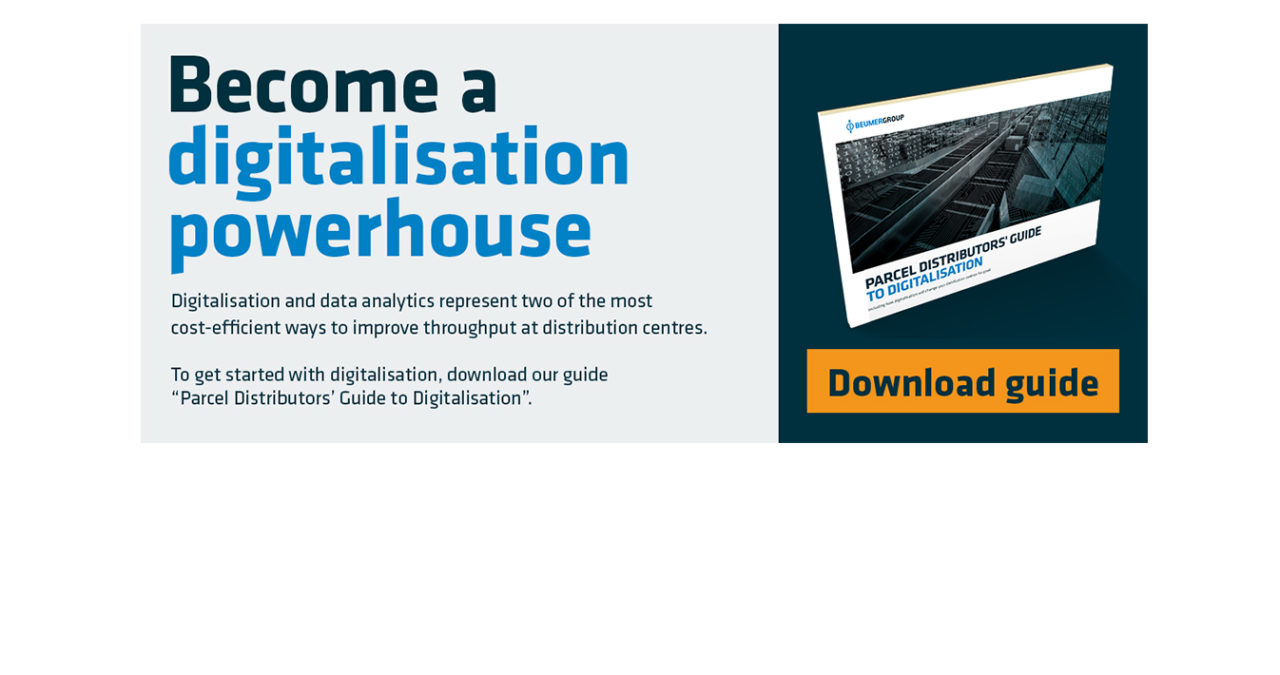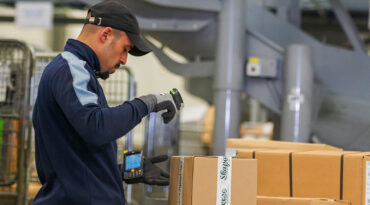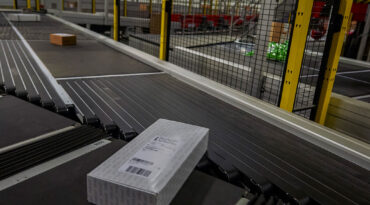Applying this type of intelligence is in fact straight forward and can do away with some of the more expensive scanning solutions. At this point, expensive equipment is not needed to know every single profile detail of the parcel. It just needs to know what kind of parcel it is so the system can determine what to do with it – and that’s what machine learning can do very quickly.
How to implement parcel intelligence
Parcel intelligence is easily implemented in both new and existing systems. Taking images, training the system and conducting test runs can all be carried out during normal operations without interfering with the distribution centre’s production. Once the algorithm is put through test runs, analysed and improved upon, it can then be implemented on actual flows and sortations. It doesn’t require high quality images in order to work, so will perform just as well using the types of cameras found in existing sortation systems.
Read “The parcel distributor’s guide to data analytics and digitalisation”.
Benefits of parcel intelligence
The great value of adopting parcel intelligence in distribution centres is that the system can be used for any item the human eye can see – important for hubs that are increasingly receiving different types of items driven by the boom in e-retail.
The system is constantly improving, so if inbound flows change and new types of parcels are arriving, the system can adjust to those changes through the image analytics and computerised categorisation.
As mentioned, parcel intelligence will work with any camera technology – from high quality line scanners to simpler cameras used only for this purpose of taking pictures of individual items.
The system can be installed anywhere and on any type of equipment, whether it’s at the inbound receiving point, the booms, the point at which the items are placed on the sorting system, over the conveyors, over the chutes or on the gates in and out of the facility.
Conclusion
Parcel intelligence technology and machine learning is an easy and effective way in which distribution centres can register immeasurable parcels in their sortation processes, without slowing down or reducing inbound capacities. It’s a very agile technology that can easily be tested prior to its installation to prove its potential benefits. And it just gets better and better over time as the algorithm improves!
Do you want to know more about the potential of digitalisation for your distribution centre? Download our e-book about digitalisation for parcel distributors.

